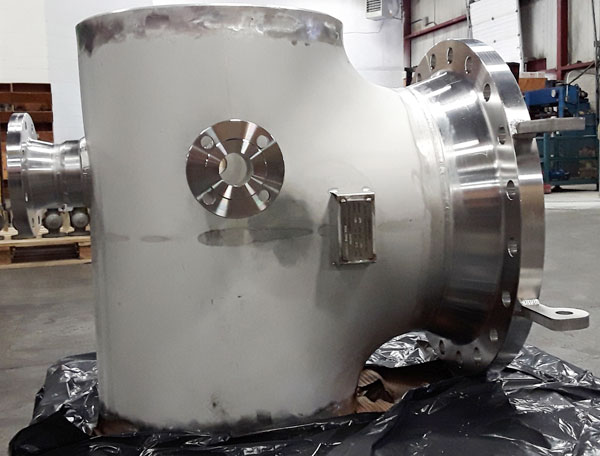Just to keep the website fresh we thought we’d talk about ‘pickling!’
I know what you’re thinking. It’s summer. The cucumbers are ready to harvest, why wouldn’t we talk about pickling?
In this case we’re not talking about preserving small cucumbers to eat this winter with our grilled cheese, we’re talking about the process of removing a thin layer of material on a metal surface.
The story begins with the 20-inch TW150SSBW fabricated by the professionals at Sure Flow Equipment, pictured here:
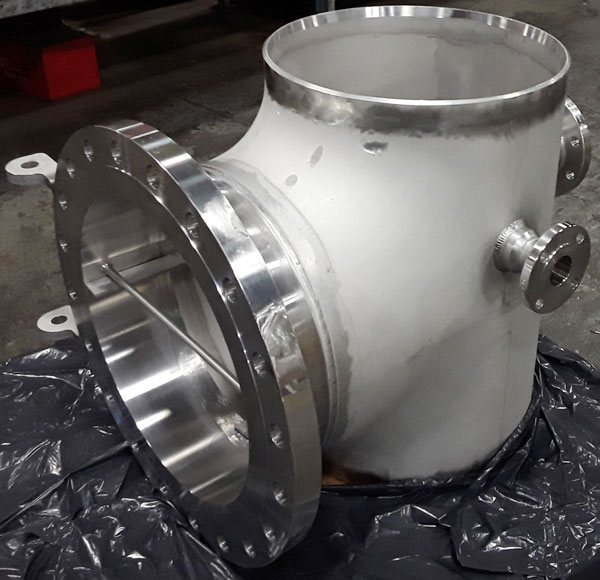
This is a 20 inch 150 316/316L Tee strainer.
You can see the buttweld connection on both the inlet and outlet.
The unit has a bolted cover with a hinge assembly for ease of blind flange removal. A ‘blind flange’ is the technical name for the cover, meaning it basically seals or plugs a pipe, or terminates a pipe. It will have the same thickness and bolting pattern as the flange on the end of the pipe and will be held in place by bolts.
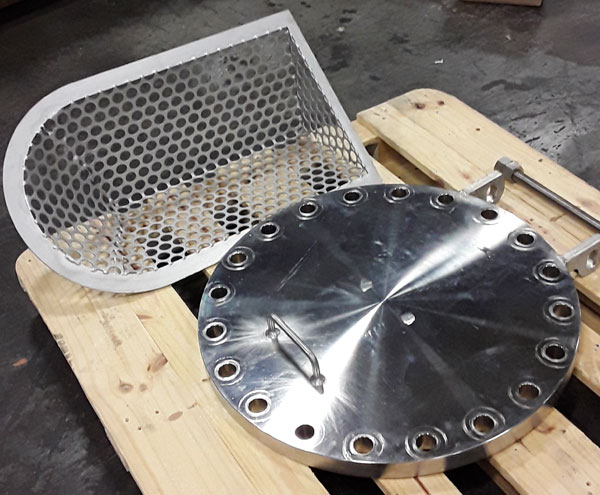
This Tee Strainer has two 2-inch flanged connections on the body of the strainer to help clean the basket.
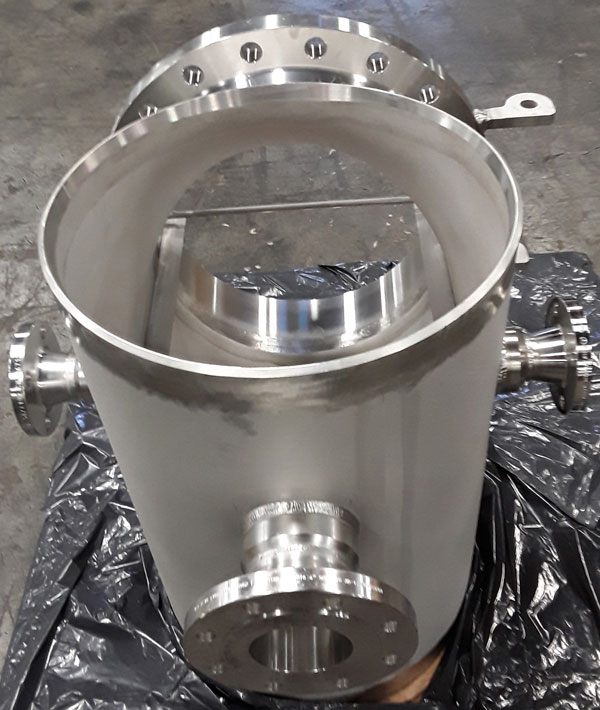
In the photo above you can see a 4-inch flanged connection on the body. This has been fabricated into the unit to add a sight glass, which allows the operator to visually observe what’s happening inside the unit and can aid in the determination of timing for removal and cleaning of the screen.
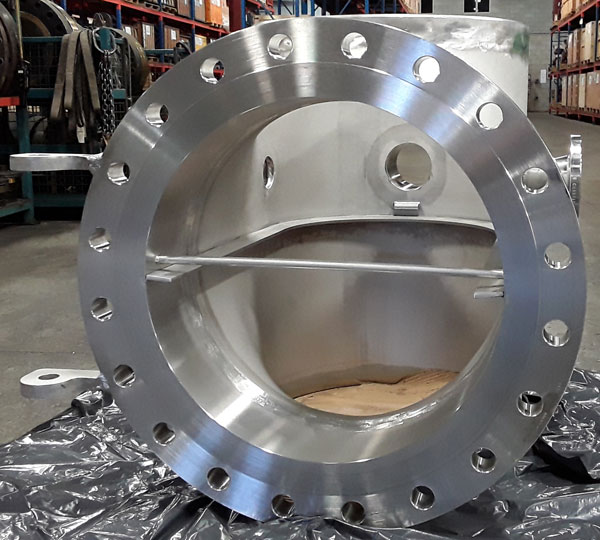
In this photo you can see where the screen will be slid into place. You can also see the inside opening of the 4-inch flange where the sight glass will be added. Depending on the fluid being processed the operator will have an opportunity to get a visual idea of the degree of build-up of solids and particulate of the screen and when it will need to be cleaned.
This unit was fabricated in our production facility and all the welds were gel cleaned. It includes 100% radiography of all the buttwelds.
It includes an Ontario CRN or Canadian Registration Number which is issued by the TSSA (Technical Standards & Safety Authority) for any pressure vessel that operates at a pressure higher than 15 psig. It’s just one of the many certifications that Sure Flow Equipment participates in for our quest for continuous quality improvement.
https://www.tssa.org/en/boilers-pressure-vessels/nationalservice.aspx
Finally, to circle back to our opening catch phrase, this unit was pickled and passivated to ASTM A380.
One of the features that stands out in the photographs of this fabricated unit, is just how awesomely shiny the stainless steel is. We all know that over time metals will begin to oxidize as they are exposed to moisture and air. This oxidization will see the formation of a scale of corrosion and hard minerals.
‘Pickling’ is designed to rigorously clean and activate metal surfaces by removing a thin layer on the outside of the material. Once pickled the surface is metallically pure and free of oxides and contamination of other metals. The pickling process attacks the ‘grain boundary’ of the metal structure. The resulting metal surface will have a satin glass to matte appearance.
Preparation of the final unit also included ‘passivation’ where the stainless steel was treated with a mild oxidant, or acid solution. This removes any foreign matter and free iron from the surface. This improves the corrosion resistance of the product which is obviously critical to long term maintenance. Stainless steels naturally form a corrosion resistant layer and the passivation process enhances this process.
Stainless steel was selected for this Tee strainer because of its permanent corrosion resistance and passivity in the production process. So yes, while the pickling and passivation process improve how great the unit looks, it is primarily used as a surface treatment to ensure the longevity and productivity of the product once it is installed and begins doing the job it was intended for.
This unit includes buttwelds connections where the unit will be welded into position in the piping and process system. Before any welding process begins the welder will thoroughly clean the surface generally through a mechanical process, like a wire brush, to avoid adding any chemical contamination.
In the case of a fabricated Tee Strainer like this, pickling and passivation ensured the unit was uniformly cleaned and prepared for integration in the process where it will be used.
Some of us are old enough to remember the days when part of the appeal of an automobile was how much the metal shined after it was washed. With a fabricated stainless steel unit like this, pickling and passivation made it look fabulous but more importantly improved its durability and functionality for our customer.
